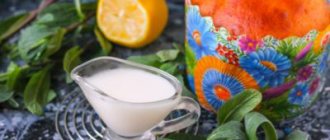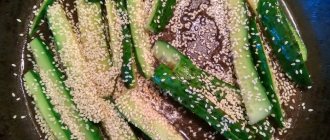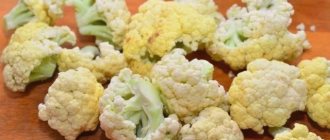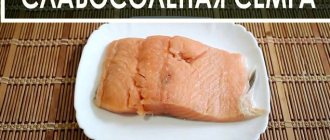For experienced housewives who often pamper their loved ones with a variety of baked goods, it is no secret how to quickly and easily prepare delicious sugar fudge for decorating cakes, pastries and Easter cakes. But the process of making fudge takes much more time and effort, but the result is worth it. It can be used not only for decoration, but also as an independent dessert, very tender and melting in the mouth.
The principle of making fudge
Any confectionery fudge, regardless of what ingredients are used in it, is, first of all, sugar syrup evaporated to a viscous state. If it is prepared on a water basis, then the evaporation process takes about five minutes, but if the fudge is prepared on milk or cream, then you will have to wait about half an hour.
It is worth considering the fact that during the process of boiling the fudge, the mass will thicken very much, and in order to stir it well, you will need a very strong and reliable wooden spatula.
It is best to prepare fudge in a capacious enamel saucepan with a long handle, because with constant stirring an ordinary saucepan will slide to the side.
It is worth preparing molds in advance that you will fill with ready-made fudge for hardening. They can be small silicone ones, or from regular candies in a box.
If you are cooking in the warm season, stock up on ice in advance. There should be at least half a kilogram of it in the freezer.
Fondant for Easter cakes made from powdered sugar
This fudge recipe can be called one of the simplest. To prepare this fudge you only need powdered sugar and water, and a little time.
- Powdered sugar – 2.5 tbsp. l.
- Water – 10 tbsp. l.
Sugar fudge
- If you don’t have powdered sugar, don’t worry, take regular granulated sugar and grind it with a coffee grinder or grind it by hand.
- Place the powder and slightly warmed water in a saucepan, cook over low heat until the fudge becomes thick, but do not boil the mass.
- If the fudge turns out to be too thick, simply dilute it with warm water to the desired consistency, if on the contrary, add a little powder and cook a little more.
- If desired, you can add food coloring or some flavoring to this fondant to make it even tastier and more beautiful.
- Please note that you need to cover the cakes with this glaze immediately after cooking, otherwise it will harden and it will be impossible to work with it further.
Classic fudge recipe
There are a wide variety of options for making fudge, in which, in addition to cream and sugar, they also add butter, milk, honey, vanilla and other ingredients that enhance the taste. But if you want to get exactly the kind of candy that you adored in your Soviet childhood, then it’s best to get by with the minimum.
To make fudge we will need:
- Four hundred and fifty grams of milk (preferably full-fat, homemade and always fresh so it doesn’t curdle).
- Four hundred grams of sugar.
Cooking steps:
- Pour sugar into a liter ladle with a long handle, fill it with milk and place on medium heat. Bring to a boil, stirring constantly with a wooden spatula.
- Then we continue to cook the syrup for half an hour, stirring constantly and without leaving the stove, otherwise the mixture will immediately run off onto the stove.
- The degree of readiness of the syrup can be determined by the following signs: it has become half as much, the color has changed and become dark cream, the boiling bubbles are no longer small, but large and lazy.
- To make sure the fudge is ready, drop it on a piece of ice. After it has cooled a little and does not burn your fingers, roll it into a ball. It should have a consistency similar to soft, elastic plasticine.
- If the drop spreads, then you need to keep the ladle on the fire a little longer and repeat the experiment. If the drop hardens into a hard caramel, then add two tablespoons of milk to the ladle, stir and try again.
- The next important step in preparing the fudge is to cool it quickly. In winter, a balcony is suitable for this purpose, and in summer, ice from the freezer. Place it in a deep bowl, dilute it with a little cold water and place a ladle on top. Constantly stir the syrup with a spatula until it cools to twenty degrees. The fudge will begin to thicken and it will become increasingly difficult to mix.
- When the syrup becomes very thick, beat it with a spatula for another five minutes. This is very difficult, but necessary.
- Gradually, the fondant will begin to change its color and consistency and, as a result, will become a homogeneous light lump.
- Grease the molds with butter. Heat the saucepan with fudge a little over low heat until the mass becomes elastic.
- Place the fudge into the molds and let it harden in the refrigerator.
See also Chocolate baskets
LiveInternetLiveInternet
Quote from Nina_Andreevna's message
Read in full In your quotation book or community!
SOURCE
Photo: ladyspecial.ru
Fondant or confectionery glaze is the finishing touch to making desserts. Without her, many of them seem as appetizing as with her. The preparation of confectionery glaze or fondant will be discussed in this article.
In general, of course, from the point of view of professional chefs, glaze and fondant are two different things. The first differs from the second in less plasticity, since fondant hardens more slowly than glaze. However, there is nothing criminal in equating these two confectionery additives to the same group. After all, their use is exactly the same: for decorating cupcakes, pastries, Easter cakes, gingerbread cookies, cakes, etc.
So what is fudge? Boiled sugar syrup is called fudge or fondant mass - this is the basic version, a classic fudge. Making it at home is not at all difficult: for this, syrup is boiled from sugar and water, which is then quickly cooled with ice and then whipped with a mixer. Everything is quite simple, and even a novice cook can make excellent fudge if you strictly follow the instructions.
The principle of converting sugar and water into fondant is that thick sugar syrups are prone to sugaring - the formation of small sugar crystals, which, due to their softness, give the fondant a special texture. To make the crystals smaller, however, you need to take several special steps - in everyday life, for this, citric acid is added to the syrup when cooking, which prevents the growth of crystals. It is believed that the ideal proportion for fudge is 30% water to the total mass of sugar.
There are a lot of different variations of sweets today. Depending on the presence of milk in the recipe, they are divided into three large groups: sugar, milk or cream, and creme brulee (with a large amount of pre-cooked cream or milk). During the cooking process, fruit and berry components can be added to fudge; accordingly, such options are called fruit fudge. Also, cocoa powder, crushed nuts and other ingredients are added to the fudge, which determine such a variety of this confectionery additive. To begin with, it is better to learn how to prepare a basic or classic version of fudge.
Classic fudge recipe
Photo: povarionochek.ru
You will need: 500g sugar, 150g water, 1 tbsp. lemon juice, ice.
How to make traditional fudge. Pour sugar into a saucepan, pour in water, turn on medium heat and cook, stirring, until the sugar dissolves; when it boils, turn off the stove and skim off the foam. Any sugar stuck to the sides of the pan should be removed with a wet brush - it can cause the formation of large crystals that will ruin the consistency of the fudge. Then turn on the heat again, boil for about 4 minutes without stirring and pour in 1 tbsp. lemon juice, continue to simmer the syrup for another minute. Readiness is determined by testing for a soft ball: you need to scoop up a third of a teaspoon of fondant, put it in cold water, remove the frozen syrup from the spoon with your fingers, roll it into a ball, which should be plastic and soft. If you get such a ball, the pan must be immediately removed from the heat. Pour the syrup into a wide bowl, place pieces of ice on top, let the mixture cool to about 40 degrees (this will take 15-20 minutes). Next, first with a spoon and then with a mixer, beat the fudge - for a total of 10-15 minutes. As you beat, the fudge will gradually turn white and thicken. The readiness of the fondant is determined by its appearance: it is non-sticky, very thick, and plastic. For better crystallization, it is better to leave the finished fudge for a day in a plastic container at room temperature, cover with a damp cloth and a lid on top. Then you can put it in the refrigerator for storage. To use, take the required amount of fudge and heat it up a little with constant stirring until it reaches a fluid consistency, preferably in a water bath. To add color at this stage, you can add beet juice or cocoa to the fondant.
Making fudge seems complicated only at first glance, but in reality everything is much simpler, you just have to try it and you will be convinced of it. Well, we’ll tell you about two more popular fudge options.
Fudge Recipe
You will need: 100 ml of heavy cream, 40 g of butter, 1 glass of sugar, a pinch of vanillin.
How to make fudge. Pour heavy cream into a saucepan, add sugar and butter, turn on low heat and bring everything to a boil while stirring constantly, otherwise the mixture will burn. Boil the mixture until it becomes creamy, put a drop of fudge in cold water, then, if it has frozen and rolls well into a plastic ball, remove the fudge from the heat - it is ready.
Fudge can be used not only to cover confectionery products, but also poured into molds and served on its own as a dessert.
Protein fudge recipe
Photo: ladyspecial.ru
You will need: 300g powdered sugar, 2 egg whites, 2 tbsp. lemon juice.
How to make protein fudge. Beat the chilled whites with a pinch of salt until they increase 3-4 times in volume. Continuing to beat, gradually add powdered sugar and lemon juice. The egg white fudge should be strong and fluffy. Then you can add syrup, jam or food coloring to it and immediately use it for its intended purpose.
Technically, this protein option has little relation to fudge, since it is not subjected to heat treatment - in fact, it is whipped egg whites. However, this version of glaze is also called fondant, and it is used quite often.
Subtleties of making fudge
Photo: mnogomamok.ru
- It is very important not to overcook the fudge: if the ball is rolled up, but it is too hard and not plastic, it means that the mass has already been overcooked and fudge will not be made from it. If the ball, on the contrary, does not roll, then it needs to be heated further, stirring frequently.
- Fast and uniform cooling is one of the main conditions for proper crystallization of the syrup, so it is very important to perform this step correctly. If there is no ice, you can pour cold water over the syrup, but be careful so that it covers only the top of the fondant, without forming depressions in its thickness. Or you can place the fudge container in a larger one filled with ice water.
- If a crust forms on the fudge during the cooling process, then the mass must be heated again and more lemon juice must be added.
- After cooling, the fudge must first be carefully mixed with a spoon or spatula and only then with a mixer. When to stop whipping? When the mass acquires a creamy color and becomes similar in consistency to sour cream.
- The fondant can be used immediately for its intended purpose.
- To add color or other shades of taste, you can add syrups, juices, coffee, liqueurs, cognac, rum, liqueurs, jams and preserves to the finished fudge.
- When storing in the refrigerator, the fudge should be wrapped in cling film, otherwise it may dry out.
Try making your own fudge at home and feel like a real pastry chef!










